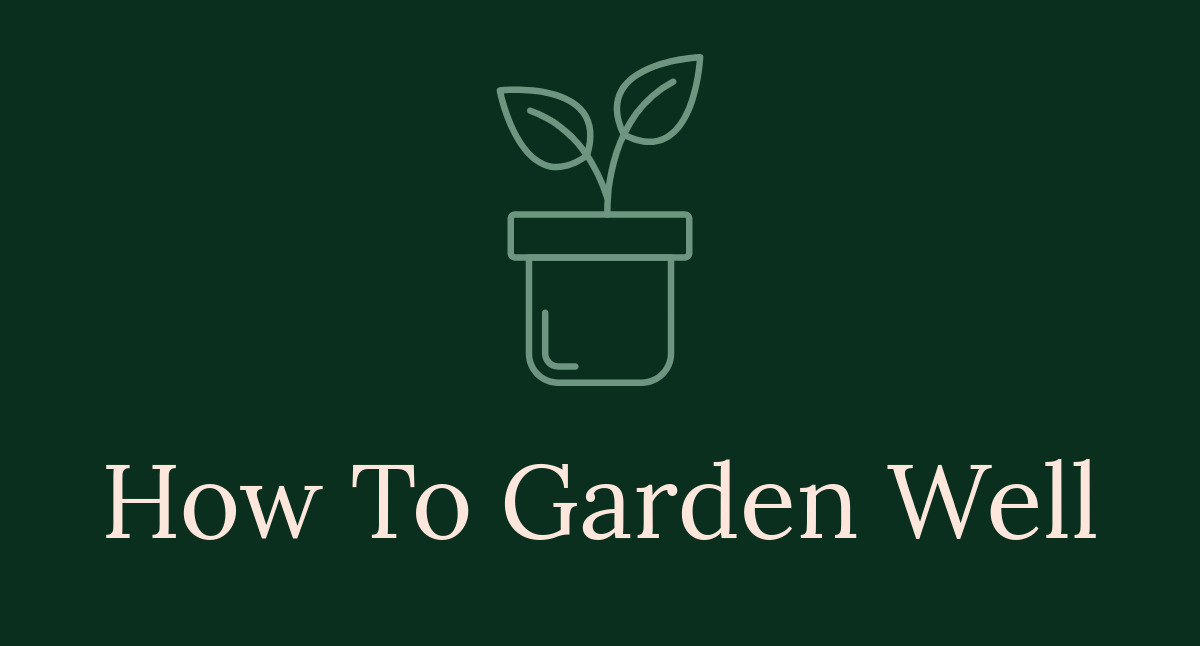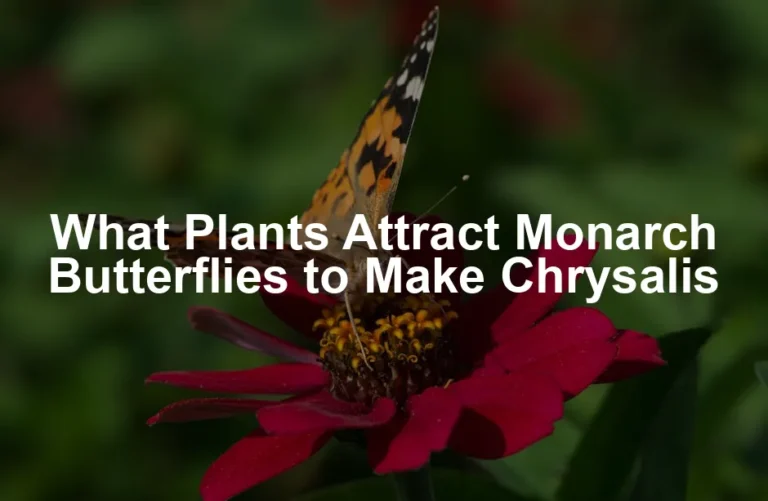
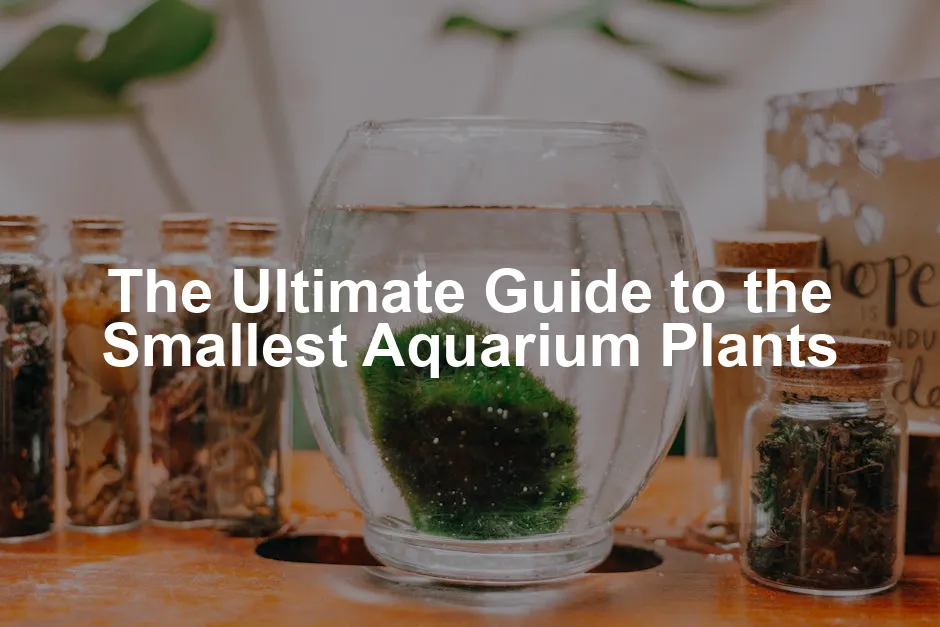
The Ultimate Guide to the Smallest Aquarium Plants
Introduction
Small aquarium plants are gaining popularity among aquascapers. Their compact size makes them perfect for nano tanks. These plants not only beautify your aquarium but also benefit aquatic ecosystems. They provide hiding spots for fish and improve water quality. This article will explore various small aquarium plants suitable for different setups.
Summary and Overview
The trend of nano tanks is on the rise. These small tanks offer unique challenges and rewards. Small plants play a crucial role in creating stunning aquatic landscapes. They fit perfectly in smaller spaces, making them ideal for limited setups.
You can categorize small aquarium plants into three main groups: foreground, mid-ground, and background options. Foreground plants create a lush carpet effect, while mid-ground plants add depth. Background plants provide a stunning backdrop for your aquatic scene.
Using small plants comes with several advantages. They are typically easy to maintain, making them beginner-friendly. Plus, they can thrive in various tank sizes. Choosing the right plants is vital for success. Always consider light and water conditions when selecting plants. This ensures a healthy environment for your aquatic life.
Speaking of choosing the right plants, have you considered enhancing your aquarium with Nutrafin Aqua Plus Water Conditioner? This little gem helps create a safe environment by removing harmful chemicals, making your fish feel right at home!

Selecting the Right Small Aquarium Plants
Choosing the right small aquarium plants is crucial for a thriving tank. Start by considering your tank size. Smaller tanks, or nano tanks, often have limited space, which influences plant selection. You want plants that will fit without overwhelming your setup.
Next, think about light conditions. Plants have varying light needs: low, moderate, or high. For example, low-light plants like Anubias Nana thrive without intense lighting. In contrast, if you have brighter lights, you can opt for more demanding species. And speaking of Anubias, you can find a beautiful Anubias Nana Live Aquarium Plant for your setup!
Water parameters also play a significant role. Check your tank’s pH and hardness levels. Most aquatic plants prefer a pH between 6.0 and 7.5. For hardness, aim for soft to moderately hard water. This ensures your plants stay healthy and vibrant.
Compatibility with fish and other aquatic life cannot be overlooked. Some plants might not mix well with certain species. Research which plants are safe and beneficial with your fish. For instance, incorporating API Freshwater Master Test Kit can help you monitor those vital parameters!
Growth rates are another factor to consider. Fast-growing plants can help maintain water quality by absorbing excess nutrients. According to studies, plants like Dwarf Hairgrass can grow up to an inch per week under optimal conditions. This growth helps stabilize the ecosystem in your tank.
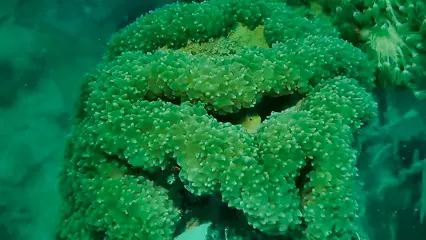
Before selecting plants, assess your tank’s conditions. Understanding your environment will lead to better choices, ensuring a beautiful and healthy aquarium.
When setting up your aquascape, it’s essential to consider the right equipment and accessories. For example, a water garden filter replacement kit can significantly enhance your setup. how to choose a water garden filter replacement kit for aquascaping
Foreground Plants for Nano Tanks
When setting up a nano aquarium, choosing the right foreground plants is essential. These plants not only enhance the visual appeal but also create a lush environment for your aquatic life. Ideal foreground plants should be small, low-growing, and capable of forming a beautiful carpet effect. This way, they can effectively fill in the front of your tank, providing a stunning backdrop for your fish.
One popular option is Hemianthus callitrichoides, often known as “HC.” This tiny plant grows only about 1-2 inches tall and thrives in various light conditions. It requires moderate care but rewards you with a dense, green carpet when properly maintained. You can find this gem at Hemianthus Callitrichoides Live Aquarium Plant today!
Another excellent choice is Lilaeopsis Novaezelandiae. This hardy plant also remains low to the substrate and can tolerate different water conditions. It grows slowly but can form a lovely grassy effect over time.
Creating a carpet effect involves planting these foreground aquarium plants closely together. This technique encourages the plants to spread and fill in gaps. Regular trimming helps maintain the desired height and promotes bushier growth, keeping your tank looking tidy. When planting, ensure you use nutrient-rich substrate to support their growth.
In terms of maintenance, both Hemianthus callitrichoides and Lilaeopsis Novaezelandiae have moderate requirements. They prefer a light duration of 8-10 hours daily and benefit from CO2 supplementation in the water, especially for faster growth. A good CO2 Diffuser for Aquarium can make a world of difference!
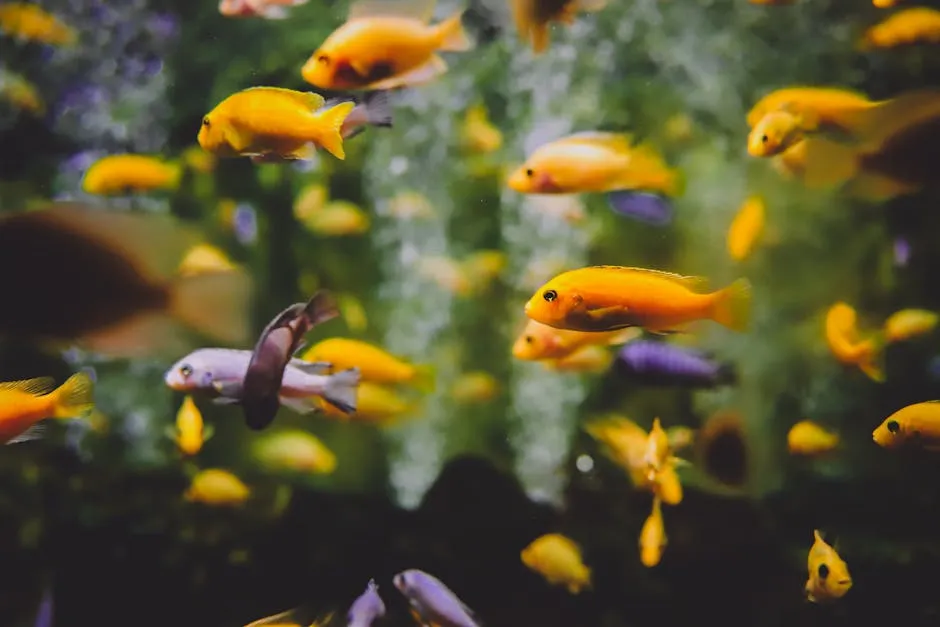
Experimenting with different foreground plants can lead to a beautifully diverse look in your nano tank. Don’t hesitate to mix and match these options for a stunning aquascape that showcases your personal style!
Mid-Ground and Background Plants
Layering is crucial in aquascaping. It creates depth and visual interest in your aquarium. Mid-ground and background plants play a significant role in achieving this effect. Let’s look at some fantastic plant options for your small tanks.
One excellent choice for mid-ground is Bacopa Caroliniana. This plant can reach up to 6 inches in height and thrives in low to moderate light. Its bright green leaves add a refreshing touch to your setup. Plus, it’s easy to propagate! Just snip off the stems and replant them for a fuller look. You can grab your own Bacopa Caroliniana Live Aquarium Plant now!
Another great option is Rotala wallichii. This stem plant can grow as tall as 12 inches, making it ideal for the background. It prefers brighter light and can turn a lovely reddish hue under optimal conditions. This vibrant color adds a striking contrast in your aquarium.
Combining plants like Bacopa and Rotala creates an appealing layer effect. Place taller plants like Rotala at the back and shorter ones like Bacopa in front. This arrangement draws the eye and makes the tank feel more dynamic.
However, avoid common mistakes when selecting plants. Many beginners choose plants based solely on appearance, neglecting their growth habits. Make sure the plants you choose won’t outgrow your tank or crowd each other. Researching plant compatibility is essential for a thriving aquatic environment. Don’t forget to check out Fluval Plant and Shrimp Stratum for a nutrient-rich substrate!
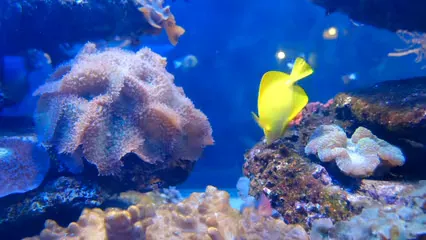
Before you start planting, visualize your tank layout. Picture how the plants will interact with each other and your fish. This planning ensures a harmonious and beautiful aquarium that you’ll enjoy for years to come.
Maintenance Tips for Small Aquarium Plants
Maintaining small aquarium plants requires regular attention. Start with trimming and pruning. This practice helps prevent overgrowth and keeps your plants healthy. Aim to trim back any dead or yellowing leaves to encourage new growth.
Fertilization is another key aspect of plant care. Use a liquid fertilizer that suits your plant types. Remember to provide a nutrient-rich substrate as well. This combination will support your plants’ growth effectively. Consider using Seachem Flourish Comprehensive Plant Supplement for an added boost!
Managing algae is crucial for a clean tank. Regular water changes help maintain water quality. Aim to change about 20% of the water weekly. This practice promotes a balanced environment for your plants and fish.
Statistics show that plants like Dwarf Hairgrass can grow up to an inch per week under ideal conditions. This growth rate means you may need to trim it more frequently. Keeping an eye on growth patterns will help you maintain a tidy appearance.

Lastly, monitor your water quality. Test for ammonia, nitrite, and nitrate levels regularly. This monitoring ensures a healthy habitat for your plants and aquatic life. Make sure to have an Aqueon Aquarium Water Changer on hand for easy water changes!
By following these maintenance tips, you can enjoy a thriving aquarium filled with beautiful small plants. Share your experiences and tips in the comments below!
FAQs
What are the best small aquarium plants for low light conditions?
If you have low light, try Anubias Nana and Java Fern. Both thrive in dim environments and require minimal care.
How do I care for small aquarium plants?
Focus on lighting, water quality, and regular maintenance. Aim for balanced conditions to ensure a healthy aquarium.
Can I mix different small plants in one tank?
Yes! Just ensure they are compatible. Mixing plants can enhance the visual appeal of your aquarium.
What is the ideal substrate for small aquarium plants?
Use nutrient-rich substrates. They provide essential nutrients, promoting healthy growth for your plants.
How often should I trim my aquarium plants?
Trim based on growth rates. Generally, every few weeks is a good rule to keep them tidy and healthy.
Please let us know what you think about our content by leaving a comment down below!
Thank you for reading till here 🙂 If you’re also looking for some great tools, consider grabbing an Aquarium Gravel Vacuum Cleaner or an Aquarium Cleaning Brush Set to keep your tank spotless!
All images from Pexels
